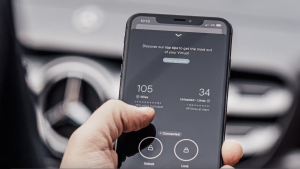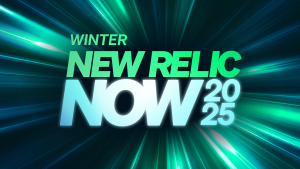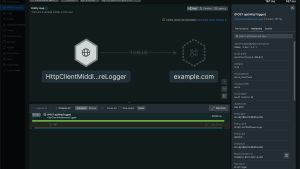Keeping track of new product features and software development trends can be overwhelming. That’s why we developed the Nerdlog. Follow us on Twitch and tune in every Thursday at noon PT (8 p.m. UTC) to learn about the latest New Relic observability features from the product managers and engineers who built them. You can get step-by-step instructions, provide feedback, and ask questions. If you missed last week’s Nerdlog episode 2, check out the recap below.
Ingesting OpenTelemetry data with New Relic One
Director of Product Management Chris Hansen provides an overview of OpenTelemetry and showcases how ingesting OpenTelemetry data is easy with New Relic One. It allows for better integration with the tools you know and love, complete end-to-end visibility, and future-proof instrumentation.
Chris uses the docs to show how the OpenTelemetry collector and New Relic exporter work to ingest OpenTelemetry data into New Relic One. He also provides overviews of the transactions, externals, databases, errors, and metrics explorer pages in New Relic One to explain how New Relic’s Telemetry Data Platform, Full-Stack Observability, and Applied Intelligence provide additional value for data storage, visualization, and analysis on top of open observability frameworks like OpenTelemetry. Head to the GitHub repo to get started.
Real user monitoring support for Google Core Web Vitals
Senior Product Managers Rebecca Rodriguez and Lindsy Farina present an overview of Google Core Web Vitals and explain the importance of using New Relic Browser Monitoring for assessing webpage performance.
In this segment, Rebecca and Lindsy explain how real user monitoring metrics are becoming more focused on the user experience (i.e., how users feel when they engage with a website) and they showcase how the Browser summary page in New Relic One supports Google’s Core Web Vitals for loading performance (LCP), interactivity or responsiveness (FID), and visual stability (CLS). Get started by learning to install the Browser monitoring agent.
Data dropping via NerdGraph
Next, Senior Product Manager Paul Frazier and Senior Software Engineer Ryan McMahon show how to drop dimensional metrics (in addition to events, logs, and traces) at ingest to manage your data.
Paul provides a brief overview about how data dropping helps with managing privacy, costs, and teams, explains where data dropping occurs, and offers some quick tips before handing it off to Ryan. Using a dashboard with three charts and the NerdGraph API explorer (GraphiQL), Ryan showcases how to create, view, and delete data and attribute dropping rules for specific metrics. Get hands on in the NerdGraph API explorer.
Agentless syslog onboarding and other logs updates
Finally, Senior Product Manager Michael Neville-O’Neill and Senior Director Julian Giuca provide updates on all things log management and showcase agentless syslog onboarding.
With the logs mascot by their side, Michael and Julian give an overview of the new logs integrations with AWS and Cribl, and support for Windows event logs in New Relic. Using a blog he wrote with step-by-step instructions, Michael showcases how to easily get logs in New Relic One with agentless syslog onboarding. Toward the end of the episode, Michael and Julian provide an overview of saved views and encourage folks to participate in an early access feature to export logs directly from New Relic One. Get started with agentless syslog onboarding.
Subscribe to our Nerdlog emails to get weekly updates about the latest features and releases from the people who built them. Join the Nerdlog discussion live every Thursday at 12 p.m. PT (8 p.m. UTC) on Twitch or follow along in What’s New or read our other Nerdlog recaps about New Relic Navigator or open source monitoring.
If you're not a New Relic customer, sign up for your free account today.
The views expressed on this blog are those of the author and do not necessarily reflect the views of New Relic. Any solutions offered by the author are environment-specific and not part of the commercial solutions or support offered by New Relic. Please join us exclusively at the Explorers Hub (discuss.newrelic.com) for questions and support related to this blog post. This blog may contain links to content on third-party sites. By providing such links, New Relic does not adopt, guarantee, approve or endorse the information, views or products available on such sites.




